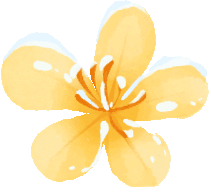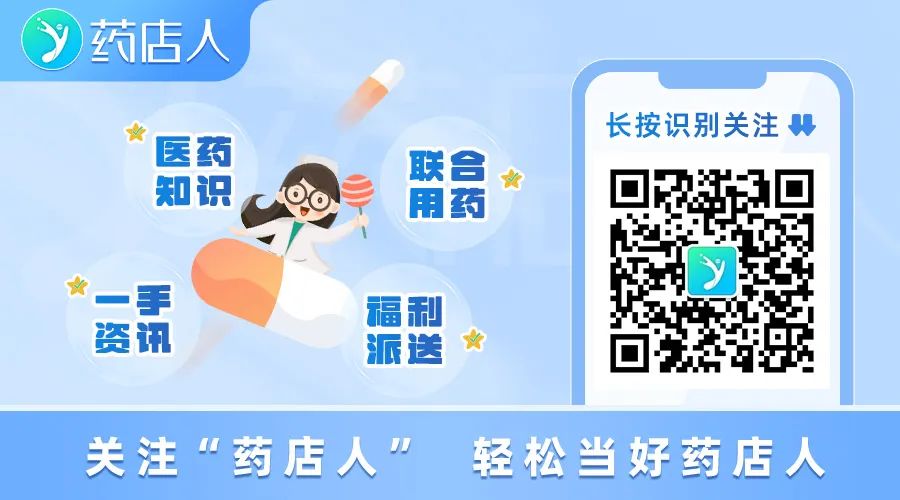Today marks the beginning of winter, and the number of people suffering from wind-cold common colds is gradually increasing. What is a wind-cold common cold? In Traditional Chinese Medicine (TCM), wind-cold common cold is a type of cold syndrome caused by the invasion of wind-cold pathogenic factors, with typical symptoms including nasal congestion, clear nasal discharge, chills, absence of sweating, mild fever, cough, white and thin phlegm, headache, and body aches. The tongue coating is thin and white, and the pulse is floating or tight.For the treatment of wind-cold common cold,the main approach is to release the exterior and disperse cold with warm and pungent herbs. There are many TCM formulas for treating wind-cold common cold. Although these medicines can all treat wind-cold common cold, their specific effects may vary due to different herbal compositions. Below, we summarize 10 common wind-cold common cold medicines for your reference. 1. Wind-Cold Common Cold GranulesOverview:Wind-Cold Common Cold Granules are composed of 11 herbs including Ma Huang (Ephedra), Ge Gen (Kudzu Root), Bai Zhi (Angelica Dahurica), Fang Feng (Siler), Zi Su Ye (Perilla Leaf), and Gui Zhi (Cinnamon Twig), which can release the exterior, induce sweating, and disperse wind-cold. This formula is comprehensive in treating wind-cold common cold, alleviating symptoms such as chills, fever, headache, body aches, nasal congestion, and runny nose caused by wind-cold invasion. It can also treat cough caused by wind-cold.
1. Wind-Cold Common Cold GranulesOverview:Wind-Cold Common Cold Granules are composed of 11 herbs including Ma Huang (Ephedra), Ge Gen (Kudzu Root), Bai Zhi (Angelica Dahurica), Fang Feng (Siler), Zi Su Ye (Perilla Leaf), and Gui Zhi (Cinnamon Twig), which can release the exterior, induce sweating, and disperse wind-cold. This formula is comprehensive in treating wind-cold common cold, alleviating symptoms such as chills, fever, headache, body aches, nasal congestion, and runny nose caused by wind-cold invasion. It can also treat cough caused by wind-cold. 2. Cold Relief GranulesOverview: Cold Relief Granules disperse wind and cold, release the exterior, and clear heat, used for mild or not obvious symptoms of wind-cold common cold in the early stage, such as mild fever, slight headache, body aches, runny nose, and sneezing. It can also be used for conditions where cold predominates and “cold traps heat,” commonly seen when external pathogens invade, presenting with chills, fever, clear nasal discharge, nasal congestion, sore throat, yellow phlegm, and aggravated fever.
2. Cold Relief GranulesOverview: Cold Relief Granules disperse wind and cold, release the exterior, and clear heat, used for mild or not obvious symptoms of wind-cold common cold in the early stage, such as mild fever, slight headache, body aches, runny nose, and sneezing. It can also be used for conditions where cold predominates and “cold traps heat,” commonly seen when external pathogens invade, presenting with chills, fever, clear nasal discharge, nasal congestion, sore throat, yellow phlegm, and aggravated fever. 3. Jing Fang Granules
3. Jing Fang Granules
Overview: Jing Fang Granules induce sweating, release the exterior, and dispel wind and dampness, focusing on dispelling wind and overcoming dampness. They are suitable for colds caused by wind-cold with dampness, which present with common symptoms such as nasal congestion, runny nose, sneezing, chills, and fever, along with pronounced cold-damp symptoms including headache, body aches, heaviness in limbs, joint pain, and a thick white tongue coating. Additionally, they can be used in the early stages of a cold when the distinction between cold and heat is not obvious.
 4. Pu Gan TabletsOverview: Pu Gan Tablets can release the exterior and disperse wind-cold, suitable for symptoms of headache, body aches, fever, sneezing, and runny nose caused by wind-cold common cold and influenza. They contain Western medicine ingredients such as Chlorpheniramine Maleate and Acetaminophen, which effectively relieve fever, pain, and nasal catarrh symptoms.
4. Pu Gan TabletsOverview: Pu Gan Tablets can release the exterior and disperse wind-cold, suitable for symptoms of headache, body aches, fever, sneezing, and runny nose caused by wind-cold common cold and influenza. They contain Western medicine ingredients such as Chlorpheniramine Maleate and Acetaminophen, which effectively relieve fever, pain, and nasal catarrh symptoms.
Precautions: Contraindicated in severe liver and kidney dysfunction; do not consume alcohol during treatment; avoid operating machinery, vehicles, or engaging in high-altitude work while taking this medication.
 5. Four Seasons Cold TabletsOverview: The function of Four Seasons Cold Tablets is to “clear heat and release the exterior.” Clearing heat refers to its ability to clear internal heat, while releasing the exterior means it can disperse cold, indicating that it is a medicine that addresses both internal and external issues, suitable for the “cold trapping heat” type of cold. This type presents with exterior cold symptoms, such as aversion to cold, chills, clear nasal discharge, difficulty sweating, nasal congestion, and white phlegm, along with internal heat symptoms like fever, thirst, sore throat, and dry mouth. This is when Four Seasons Cold Tablets are appropriate.
5. Four Seasons Cold TabletsOverview: The function of Four Seasons Cold Tablets is to “clear heat and release the exterior.” Clearing heat refers to its ability to clear internal heat, while releasing the exterior means it can disperse cold, indicating that it is a medicine that addresses both internal and external issues, suitable for the “cold trapping heat” type of cold. This type presents with exterior cold symptoms, such as aversion to cold, chills, clear nasal discharge, difficulty sweating, nasal congestion, and white phlegm, along with internal heat symptoms like fever, thirst, sore throat, and dry mouth. This is when Four Seasons Cold Tablets are appropriate. 6. Nine Flavor Qiang Huo PillsOverview: Nine Flavor Qiang Huo Pills can disperse wind, release the exterior, and eliminate cold and dampness, while also clearing internal heat, suitable for external wind-cold-dampness invasion with internal heat accumulation, presenting with symptoms such as chills, fever, absence of sweating, headache, body aches, bitter mouth, slight thirst, and a white or withered yellow tongue coating. These can be used for colds, cervical spondylosis, migraines, and rheumatic arthritis.
6. Nine Flavor Qiang Huo PillsOverview: Nine Flavor Qiang Huo Pills can disperse wind, release the exterior, and eliminate cold and dampness, while also clearing internal heat, suitable for external wind-cold-dampness invasion with internal heat accumulation, presenting with symptoms such as chills, fever, absence of sweating, headache, body aches, bitter mouth, slight thirst, and a white or withered yellow tongue coating. These can be used for colds, cervical spondylosis, migraines, and rheumatic arthritis. 7. Ge Gen Decoction Granules
7. Ge Gen Decoction Granules
Overview: Ge Gen Decoction Granules are derived from the Ge Gen Decoction in the “Treatise on Febrile Diseases.” In addition to inducing sweating for wind-cold and treating wind-cold common cold, they excel at relaxing the muscles and soothing the meridians, more suitable for the early stage of wind-cold common cold with absence of sweating, aversion to wind, headache, body aches, and stiffness in the neck and back. This includes cases where wind-cold common cold is accompanied by tightness and pain in the neck and back muscles.Additionally, Ge Gen Decoction Granules can also be used for cervical spondylosis and air conditioning sickness.
 8. Ginger and Jujube Cold Dispelling GranulesOverview: Ginger and Jujube Cold Dispelling Granules can disperse wind-cold and warm the stomach, but for wind-cold common cold, their effect in releasing the exterior and dispersing cold is relatively weak. They are more suitable for individuals with cold in the middle jiao and spleen-stomach deficiency, such as those experiencing abdominal pain (dull pain) after exposure to cold or consuming cold foods.
8. Ginger and Jujube Cold Dispelling GranulesOverview: Ginger and Jujube Cold Dispelling Granules can disperse wind-cold and warm the stomach, but for wind-cold common cold, their effect in releasing the exterior and dispersing cold is relatively weak. They are more suitable for individuals with cold in the middle jiao and spleen-stomach deficiency, such as those experiencing abdominal pain (dull pain) after exposure to cold or consuming cold foods. 9. Cold Dispelling Tablets
9. Cold Dispelling Tablets
Overview: The formula of Cold Dispelling Tablets is very similar to that of Wind-Cold Common Cold Granules, but it includes additional ingredients such as ginger, barley sprouts, and jujube, which enhance the harmonizing effect on the spleen and stomach. Therefore, in addition to releasing the exterior and dispersing cold, Cold Dispelling Tablets also have a “harmonizing” effect, more suitable for those with wind-cold common cold accompanied by spleen and stomach discomfort, loss of appetite, nausea, and vomiting.
 10. Zheng Chai Hu Decoction GranulesOverview: Zheng Chai Hu Decoction Granules can disperse wind-cold and relieve heat and pain, but their effect in dispersing cold is slightly weaker, excelling in pain relief, used for the initial stage of external wind-cold invasion, presenting with fever, chills, absence of sweating, headache, nasal congestion, sneezing, throat itching, cough, and body aches. They can also be used for the initial stage of influenza and mild upper respiratory infections with the aforementioned symptoms.It is important to note that Zheng Chai Hu Decoction Granules and Xiao Chai Hu Granules are two different TCM medicines; Xiao Chai Hu Granules are used for external diseases and Shao Yang syndrome, which are not suitable for wind-cold common cold.
10. Zheng Chai Hu Decoction GranulesOverview: Zheng Chai Hu Decoction Granules can disperse wind-cold and relieve heat and pain, but their effect in dispersing cold is slightly weaker, excelling in pain relief, used for the initial stage of external wind-cold invasion, presenting with fever, chills, absence of sweating, headache, nasal congestion, sneezing, throat itching, cough, and body aches. They can also be used for the initial stage of influenza and mild upper respiratory infections with the aforementioned symptoms.It is important to note that Zheng Chai Hu Decoction Granules and Xiao Chai Hu Granules are two different TCM medicines; Xiao Chai Hu Granules are used for external diseases and Shao Yang syndrome, which are not suitable for wind-cold common cold.
(This article is for professional reference only; please purchase and use medications according to the instructions or under the guidance of a pharmacist.)
— END —< PAST · Recommended Reading from Previous Issues >
▲Recurring oral ulcers? It’s not just heat; are you supplementing correctly?
▲Beware! A bloated stomach after meals is not just fat; this article thoroughly explains the TCM and Western medication options for gastric distension!

